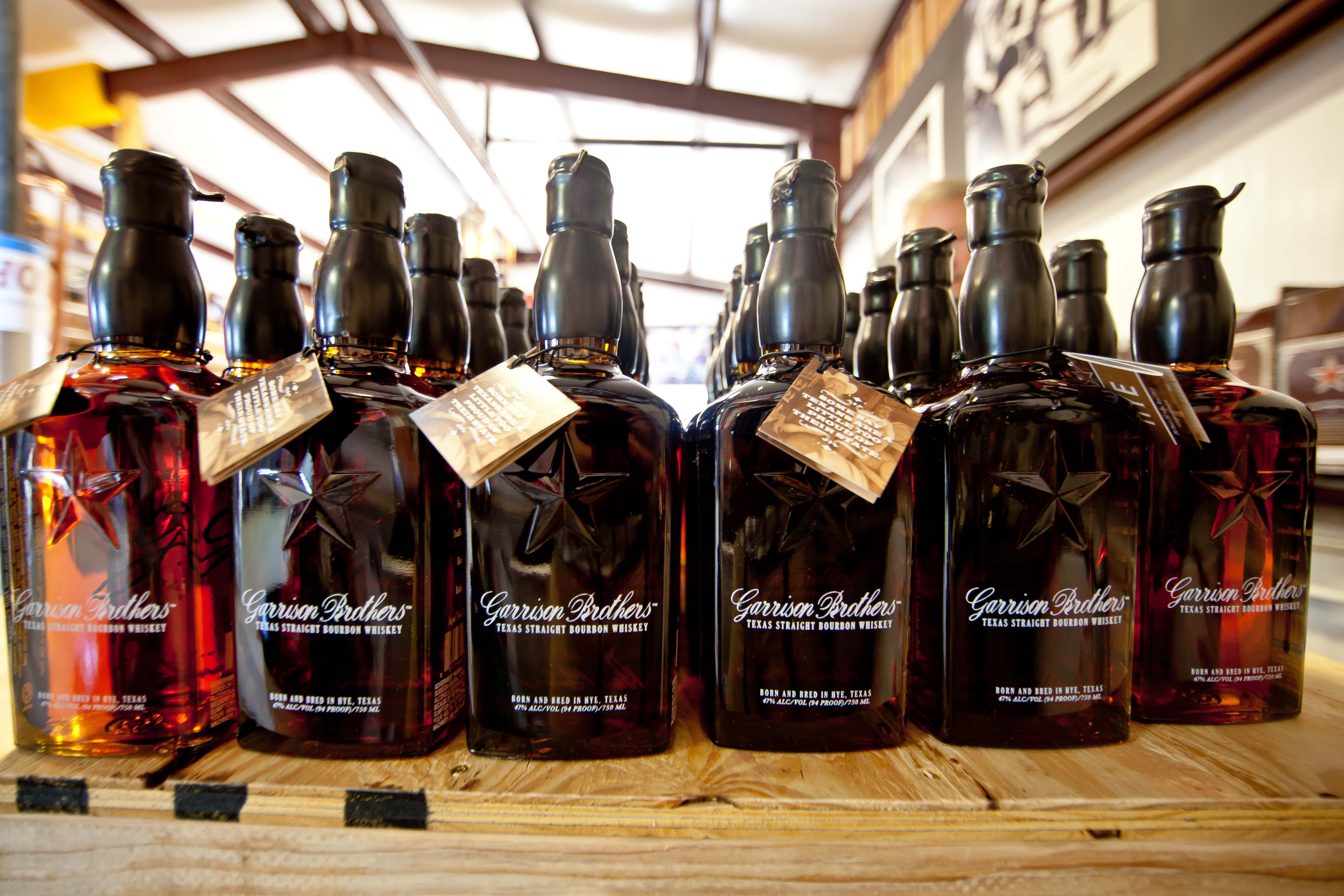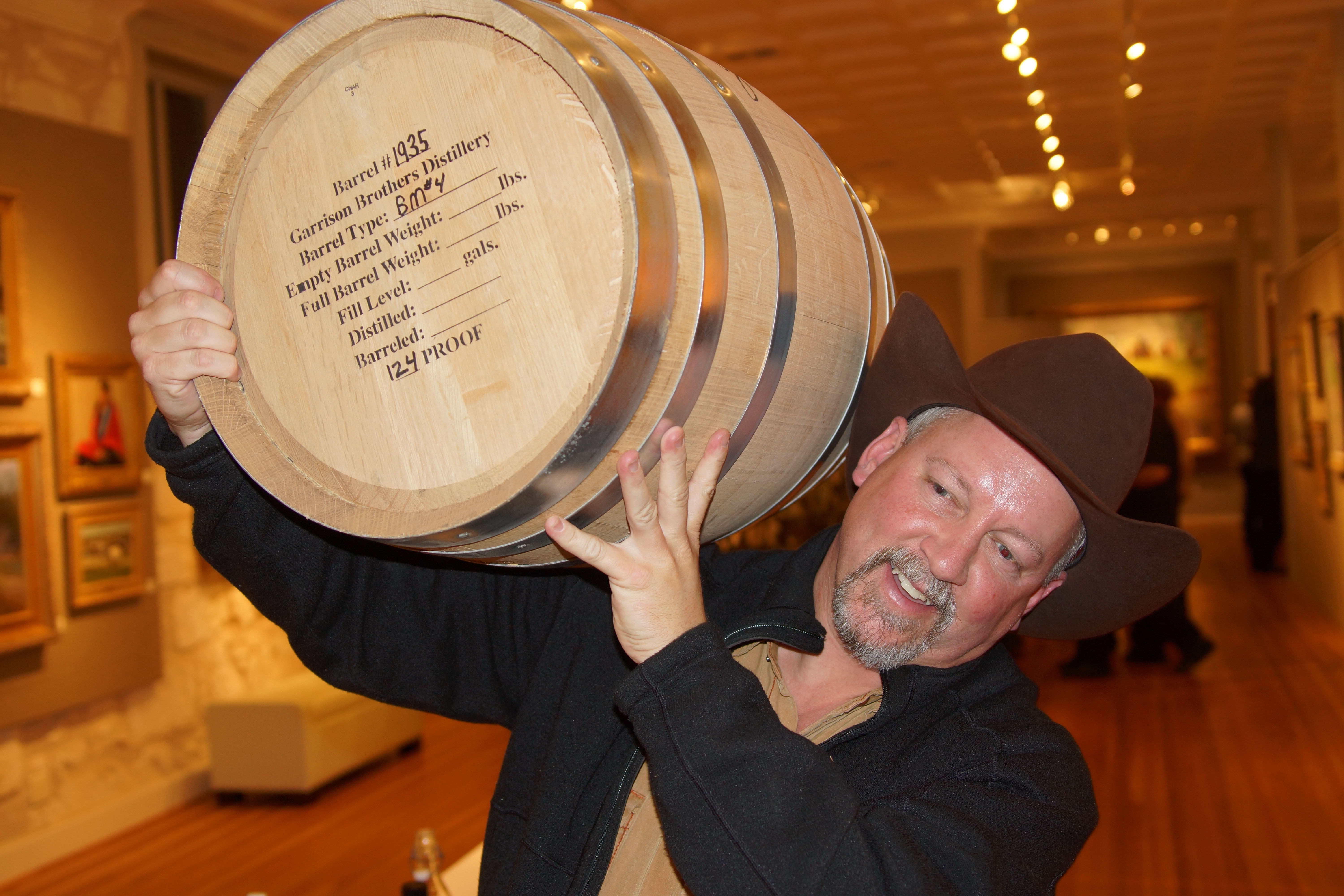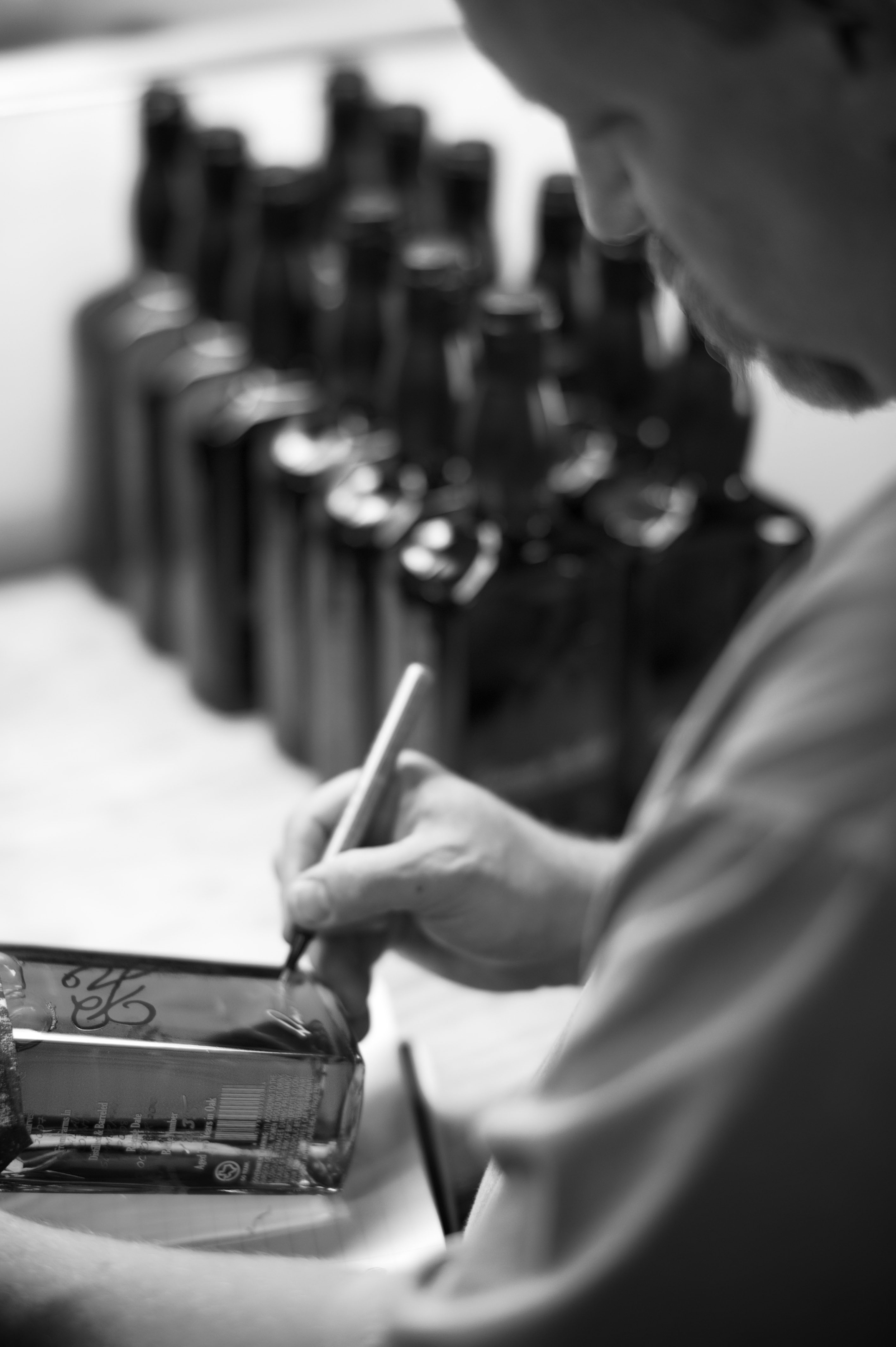
It took a little trial and error — and plenty of shots — but Dan Garrison managed to find the perfect combination of Panhandle corn and Texas winter wheat to brew a true Lone Star bourbon.
Gravel crunches beneath the tires of my car as I navigate my way down a well-worn driveway deep in the Texas Hill Country. As I steer my vehicle around the last in a series of undulating curves, I make out a single, barnlike structure in the distance, its rolling doors spread wide open revealing a large copper-pot still. Nearby, a rooster crows its early morning call. This September day marks the first of two I’ll be spending as a volunteer bourbon bottler at Garrison Brothers Distillery in Hye, Texas.
Every spring and fall Dan Garrison, proprietor and distiller of the small-batch operation, recruits volunteers like myself to help him and his staff of five bottle batches of his 94-proof brew. Our goal for the day: readying 800 bottles of the fall 2012 release for distribution across the state.
Inside the still house, I grab a bar stool at the end of the production line next to Garrison, who’s wearing a cowboy hat, blue jeans, and a well-worn pair of Red Wing boots. Next to him are two cups: one filled with silver Sharpie markers, which he uses to sign his name and the batch number on every single bottle, and another one for spitting chewing tobacco, which he’s shoved nonchalantly inside his cheek. Soon, Laurel Hoekstra, the distillery’s bottling manager and volunteer recruiter, is making her way down the long plywood table-turned-production line, tray in hand, doling out shots of bourbon.
After a quick introduction, Garrison raises his glass in a toast and we all follow suit, shouting “Salud!” and knocking back the elixir before slamming our glasses down on the table. I’d come to find that this would be the first of six rounds of shots we’d imbibe throughout the day — “quality control samples” as Garrison calls them. (A note to the teetotalers: Garrison is very careful to control the amount and pacing of the samples so that no one hits the road intoxicated at the end of the day.)
With our thirsts quenched and Willie Nelson blasting on the stereo, we get to work, dunking the neck of each just-filled-and-corked bottle into crockpots of black wax, stamping the top with a star logo, inspecting for errant wax bubbles, and polishing the exterior to erase any fingerprints before passing it along for final inspection and a signature.

Garrison tells me that before he opened the distillery, he worked in the tech industry in nearby Austin. When the company he worked for was acquired by a California software firm years ago, he found himself jobless and strapped for cash.
“I felt sorry for myself,” says Garrison, as I pass him a freshly shined bottle, which he holds up into the sun to inspect for “floaters” or loose pieces of cork. “So, to get away from it all, I took a trip to Kentucky to visit the Bourbon Trail and fell in love with it.”
Rather than stay in the technology rat race, in 2005 Garrison bought himself a small ranch an hour west of the city where he would create what he calls “the first legal bourbon distillery in Texas history.” The concept of bourbon made anywhere else but in the Bluegrass State might seem a little odd. In reality, bourbon can be made anywhere in the United States, so long as its mash bill — the grain mixture used in the spirit’s production — contains at least 51 percent corn, it’s distilled at less than 160 proof, and it’s aged in new, charred oak barrels.
From the start, he had no trouble convincing friends and family to help out — who doesn’t like free booze after all? However, there was one person he had trouble convincing: his wife, Nancy Garrison. It wasn’t until after years of trial and error trying to concoct the perfect recipe — more than 50 recipes by his count — plus numerous trips to Kentucky to learn from the expert bourbon producers that she began to come around.
“I would go to Kentucky and bring back notes. I had no idea how much biochemistry and microbiology goes into making fine bourbon,” Garrison says. “I spent many nights experimenting with hydrometers, pH strips, test tubes, thermometers, and Mason jars. There’s a lot of science that went on behind the scenes, plus a lot of frustration, since I had to learn it for myself.”

Now, more than seven years and hundreds of charred oak barrels later, Garrison Brothers Distillery has a dedicated following. Every release, from the initial batch in 2010 to the present, causes locals statewide to line up outside liquor stores to buy a coveted $70 bottle. It’s not uncommon for releases to sell out within weeks. And word is beginning to spread nationwide, especially after the distillery snagged a silver medal at the San Francisco World Spirits Competition in 2011.
Despite his whiskey’s popularity, Garrison has no desire to go national. He’d rather keep distribution within state lines. Which in many ways makes sense, especially since almost the entire product is made using Texas-grown produce. He grows the organic, soft red winter wheat right here on the ranch and gets his organic corn from farms in the Panhandle. Garrison also collects limestone-rich Hill Country rainwater from the rooftops of the distillery’s buildings and filters it using ozonization and ultraviolet light. The only ingredients that aren’t from Texas are the barley from the Pacific Northwest and Canada (Garrison tried growing it himself but found the hot climate uncooperative) and the custom-designed charred white American oak barrels that are built for him at a cooperage in Minnesota.
Another reason Garrison’s bourbon stands out from the competition is his use of a sweet mash rather than a sour one. In brief, most bourbon distilleries ferment their mash bill with yeast to make a mash and distill that mash in one of their copper-pot stills to create a high-proof liquor called “white dog.” They’ll then add sour mash from a previous distillation and use it to make the next batch. This is to maintain a consistent pH level. At Garrison Brothers, he starts with a fresh (sweet) mash for each batch he makes. Of course, doing things this way is far more expensive, but the flavor profile of the grains is more pronounced in the final product.
The scorching Texas climate also has a huge impact on the bourbon. Once the charred oak barrels have been filled with the white dog, the constant fluctuation in temperature from hot to cool causes the bourbon in the barrels to swell and shrink, forcing the aging bourbon to cycle through the wood’s crevices. As it moves, the liquid extracts sugars from the wood’s pores, yielding a bourbon with a distinct, rich caramel color and bold flavor. “We believe the Texas heat makes a better bourbon than one made in the Kentucky climate,” Garrison says.
Today, there are 5,000 barrels of bourbon aging in the Garrison Brothers barn. By law, in order to be considered straight bourbon whiskey, the spirit must age at least two years. The longer bourbon ages, the more complex the flavor profile becomes.
To keep things interesting, Garrison and his team will vary the mash bill each season, increasing or decreasing the distillation proof and/or altering the volume of white dog that goes into each barrel. This allows them to produce a unique vintage every season. So the fall 2011 release may have more or less vanilla or oaky notes compared to the fall 2012 release (the one I worked on), which has more of a smoky, hazelnut flavor.
Some people may find this kind of inconsistency problematic, but not Garrison. “Making the same bourbon over and over again is boring as hell.”
From the August/September 2013 issue.














